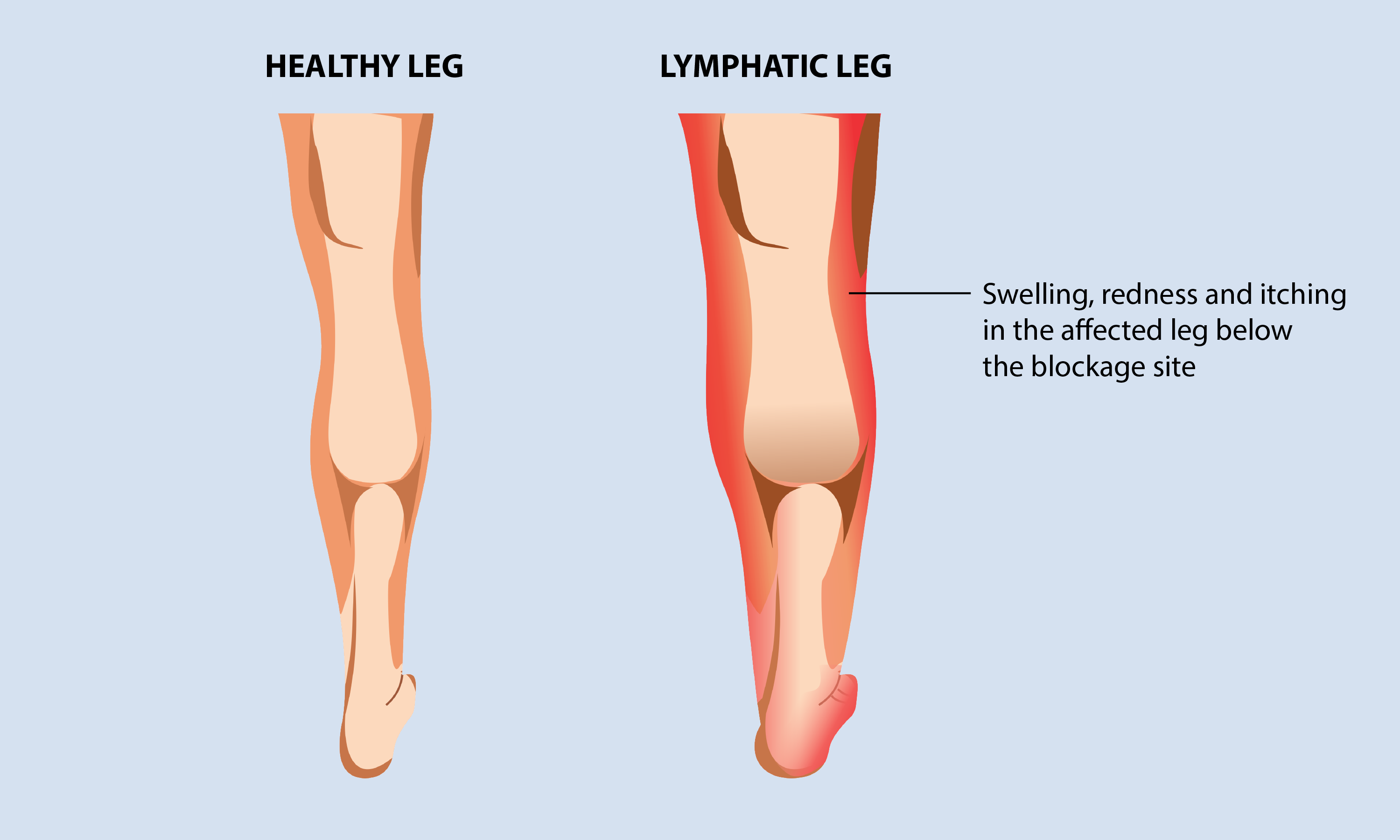Lymphedema
Lymphedema, also known as lymphatic edema or lymphoedema is the swelling in one of your arms or legs. In rare circumstances, both the arms and/or legs get swollen. Annually, about 1 million* people in India are affected by this condition.
Lymphedema is a condition related to dysfunction of the lymphatic system, also known as our body’s drainage system.
The lymphatic system is made up of a network of lymph nodes and vessels. The fluid that circulates in the lymphatic system is called lymph. One of the functions of the lymphatic system is to collect all the excess fluid in our tissues and cells and transport it back to the blood stream and the heart. However, a number of reasons may result in the blockage or damage of lymph nodes and vessels, thus leading to an inability of the lymphatic system to drain the fluid properly. The excess build-up of this fluid in our tissues causes swelling. This condition is called lymphedema.
Depending on the severity of the lymphatic blockage, the swelling may be mild or extreme in nature. In some cases, it may even result in disfiguration of the limb.
Based on the cause of the disease, lymphedema is classified into two types:
- Primary lymphedema
- Secondary lymphedema
Primary lymphedema is seen very rarely, affecting approximately 10-25% of the patients.
Also, women are at a higher risk of getting diagnosed with lymphedema.

- Primary lymphedema
- Genetics
- Failed lymph vessels
- Faulty development of lymph nodes
- Secondary lymphedema
- Obesity
- Recurrent skin infections
- Surgical removal of lymph nodes
- Tropical parasitic infection called filariasis
- Injury to the lymph/blood vessels during cancer radiation treatment
- Cancer
- Obesity
- Older age
- Rheumatoid arthritis
Lymphedema symptoms, which are seen in the affected arm or leg, include:
- Swelling in the limbs, including fingers and toes
- Formation of hard, thick skin called fibrosis
- Pain or discomfort in the affected limb
- A constant feeling of heaviness
- Fatigue with restriction of daily activities
- Fever and chills indicating serious infections
- Tingling sensation and itching with redness
However, by taking the correct lymphedema treatment, future complications like the infection of lymph vessels (lymphangitis), bacterial infection of the skin (cellulitis), and a form of soft tissue cancer called lymphangiosarcoma can be prevented.
One of the most reliable and proven ways to tackle the signs of lymphedema is compression therapy. The elastic compression socks/stockings apply pressure on the feet and lower legs, thereby promoting the healthy circulation of blood. The high-pressure also reduces the swelling of the feet, stimulates the flow of lymph fluid, and also prevents scarring and itching of the skin.
Some easy ways to avoid the risks of lymphedema include:
- Maintain a healthy body weight
- Avoid wearing tight-fitting clothing
- Protect your arms and legs from injury
- Prevent infections by keeping your skin clean and hydrated daily
- Exercise regularly to build strength and flexibility, especially after cancer treatment
- Wear graduated compression stockings
Ignoring the early signs of lymphedema can complicate the situation. Visit a doctor and manage your condition appropriately. Expert opinion always helps!
*Source: Apollo Hospitals




